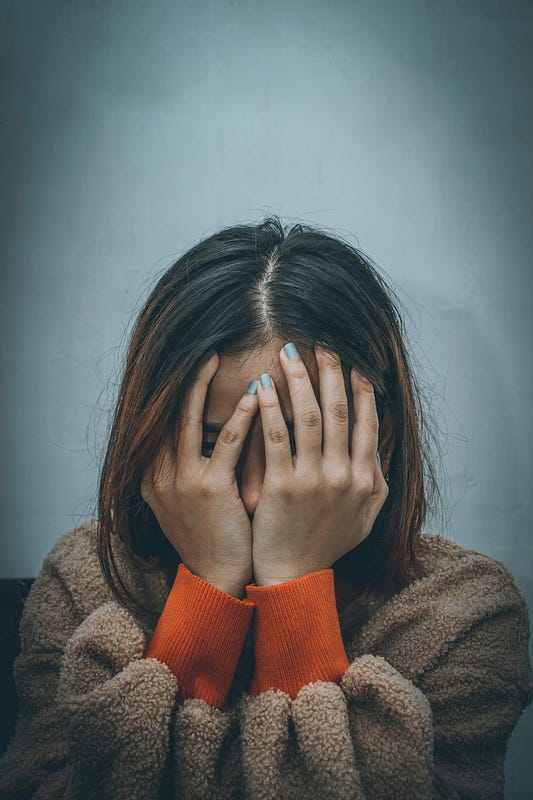Last updated on December 18th, 2024 at 03:21 am
- 1. Understanding Phobias
- 1.1 The Impact of Phobias
- 2. Types of Phobias
- 2.1 Specific Phobias
- 2.2 Social Phobia (Social Anxiety Disorder)
- 2.3 Agoraphobia
- 3. Prevalence and Demographics
- 4. Causes and Risk Factors
- 4.1 Genetic Factors
- 4.2 Environmental Factors
- 4.3 Brain Chemistry
- 4.4 Learned Behavior
- 4.5 Personality Traits
- 5. Diagnosis of Phobias
- 5.1 Clinical Interview
- 5.2 Medical History
- 5.3 Psychological Assessment
- 5.4 Diagnostic Criteria
- 6. Treatment Approaches
- 6.1 Cognitive-Behavioral Therapy (CBT)
- 6.2 Exposure Therapy
- 6.3 Medication
- 6.4 Relaxation Techniques
- 7. Self-Help Strategies
- 7.1 Education
- 7.2 Support Groups
- 7.3 Lifestyle Changes
- 7.4 Gradual Self-Exposure
- 8. Challenges and Future Directions
- 8.1 Treatment Resistance
- 8.2 Comorbidity
- 8.3 Technological Advancements
- 8.4 Prevention Strategies
- Modern Challenges in Treating Phobias
- Medication and Therapy Options for Phobias
- Recognizing Physical Symptoms of Phobias
- Specific Phobia Types: Beyond Simple Phobias
- Social Phobias and Everyday Impact
- Childhood Phobias and Development
- Common Animal Phobias
- Medical Phobias and Physical Health Conditions
- Emerging Treatment Approaches and Future Directions
- Phobia Risk Factors and Prevention
- Daily Life Management for People with Phobias
- Common Social and Situational Phobias
- Specific and Unique Phobias
- Recognizing Co-occurring Phobias
- Environmental Phobias and Their Impact
- Impact of Fear on Daily Life Activities
- Health-Related Phobias and Avoidance of Medical Services
- Future of Phobia Research and Treatment
- Conclusion
- Frequently Asked Questions
- What Are the Most Common Types of Phobias and Their Symptoms?
- How Effective Is Exposure Therapy in Treating Phobias?
- Can Cognitive-Behavioral Therapy Be Used for Social Anxiety Disorder?
- What Is the Difference Between Simple Phobias and Complex Phobias?
- How Are Physical Symptoms Managed in People with Phobias?
- What Are the Risk Factors for Developing Common Phobias?
- How Does Fear of Needles Affect People with Phobias?
- How Can Systematic Desensitization Be Used to Treat Animal Phobias?
- What Is Agoraphobia and How Does It Affect Everyday Life?
- How Does Exposure to a Fear Object Help in the Treatment of Phobias?
- Can Social Phobia Lead to Other Types of Anxiety Disorders?
- How Can Fear of Public Speaking Be Managed Effectively?
- What Treatments Are Available for Fear of Water?
- How Can Fear of Hospitals Impact Physical Health?
- Is Fear of Germs Related to Obsessive-Compulsive Disorder?
- How Is Fear of Heights Diagnosed and Treated?
- Can Fear of Thunder and Loud Noises Be Managed?
- What Are Common Phobia Triggers in Children?
- How Can Fear of Death Impact a Person’s Mental Health?
- What Is the Role of Antidepressant Medications in Phobia Treatment?
- How Can Fear of Social Activities Affect Everyday Life?
Phobias are complex psychological conditions that affect millions of people worldwide. These intense, irrational fears can significantly impact daily life, relationships, and overall well-being.
While fear is a natural response to danger, phobias involve an excessive and persistent fear reaction to specific objects or situations that pose little to no actual threat. This article explores the nature of phobias, common types, risk factors, and effective treatment approaches.
Let’s explore the most common phobias and uncover their impact, symptoms, and proven strategies to overcome these fears and lead a more confident life.
1. Understanding Phobias
Phobias are more than just simple fears. They are anxiety disorders characterized by an overwhelming and debilitating fear of specific objects, animals, activities, or situations. The fear experienced is disproportionate to the actual danger posed, and individuals with phobias often recognize their fear as irrational. However, they feel powerless to control their reactions.
Key characteristics of phobias include:
- Immediate and intense anxiety response when confronted with the feared object or situation
- Avoidance behaviors to prevent encountering the phobic stimulus
- Significant distress and interference with daily functioning
- Persistence of fear for at least six months
1.1 The Impact of Phobias
Phobias can have far-reaching consequences on an individual’s life. They may lead to:
- Social isolation and relationship difficulties
- Limited career opportunities or job performance issues
- Reduced quality of life and restricted daily activities
- Development of other mental health issues, such as depression or generalized anxiety disorder
- Increased risk of substance abuse as a coping mechanism


2. Types of Phobias
Phobias are typically categorized into three main types:
2.1 Specific Phobias
Specific phobias involve an intense fear of particular objects or situations. Common examples include:
- Arachnophobia: Fear of spiders
- Acrophobia: Fear of heights
- Claustrophobia: Fear of enclosed spaces
- Aerophobia: Fear of flying
- Hemophobia: Fear of blood
- Cynophobia: Fear of dogs
2.2 Social Phobia (Social Anxiety Disorder)
Social phobia involves an intense fear of social situations and interactions. Individuals with social phobia may experience extreme anxiety about:
- Public speaking
- Meeting new people
- Eating or drinking in public
- Being the center of attention
- Performing in front of others
2.3 Agoraphobia
Agoraphobia is a complex phobia characterized by a fear of situations where escape might be difficult or help may not be available. This can include:
- Open spaces
- Crowded places
- Public transportation
- Being outside the home alone
3. Prevalence and Demographics
Phobias are among the most common mental health disorders worldwide. Research indicates:
- Approximately 7-9% of the global population experiences a specific phobia in their lifetime
- Women are more likely to be affected by phobias than men, with a ratio of about 2:1
- Specific phobias often develop in childhood or adolescence, while social phobia typically emerges in the teenage years or early adulthood
- Phobias can affect individuals of all ages, ethnicities, and socioeconomic backgrounds
4. Causes and Risk Factors
The exact causes of phobias are not fully understood, but several factors may contribute to their development:
4.1 Genetic Factors
Research suggests that there may be a genetic component to phobias, with individuals who have a family history of anxiety disorders being more susceptible.


4.2 Environmental Factors
Traumatic experiences or witnessing others’ fearful reactions can lead to the development of phobias. For example, a child who observes a parent’s extreme fear of spiders may develop arachnophobia.
4.3 Brain Chemistry
Imbalances in neurotransmitters, particularly serotonin and dopamine, may play a role in the development and maintenance of phobias.
4.4 Learned Behavior
Phobias can be learned through classical conditioning, where a neutral stimulus becomes associated with a fear response over time.
4.5 Personality Traits
Certain personality traits, such as being shy, sensitive, or prone to anxiety, may increase the likelihood of developing phobias.
5. Diagnosis of Phobias
Diagnosing phobias involves a comprehensive assessment by a mental health professional. The process typically includes:
5.1 Clinical Interview
A detailed discussion of symptoms, their onset, duration, and impact on daily life.
5.2 Medical History
Evaluation of any underlying medical conditions that may contribute to or mimic phobia symptoms.
5.3 Psychological Assessment
Use of standardized questionnaires and diagnostic tools to assess the severity and nature of the phobia.


5.4 Diagnostic Criteria
Phobias are diagnosed based on criteria outlined in the Diagnostic and Statistical Manual of Mental Disorders (DSM-5), which include:
- Marked fear or anxiety about a specific object or situation
- The phobic object or situation almost always provokes immediate fear or anxiety
- The fear or anxiety is out of proportion to the actual danger posed
- The phobic object or situation is actively avoided or endured with intense fear or anxiety
- The fear, anxiety, or avoidance causes significant distress or impairment in social, occupational, or other important areas of functioning
- The fear, anxiety, or avoidance is persistent, typically lasting for six months or more
6. Treatment Approaches
Effective treatment for phobias often involves a combination of therapeutic interventions:
6.1 Cognitive-Behavioral Therapy (CBT)
CBT is a widely used and evidence-based approach for treating phobias. It focuses on identifying and changing negative thought patterns and behaviors associated with the phobia. Techniques may include:
- Cognitive restructuring to challenge irrational beliefs
- Gradual exposure to the feared object or situation
- Relaxation and stress management techniques
- Development of coping strategies
6.2 Exposure Therapy
This technique involves gradually and systematically exposing the individual to the feared object or situation in a controlled environment. Exposure can be:
- In vivo: Direct contact with the phobic stimulus
- Imaginal: Visualizing the feared situation
- Virtual reality: Using technology to simulate phobic scenarios
6.3 Medication
While not typically the first-line treatment for specific phobias, medication may be prescribed in some cases, particularly for social phobia or agoraphobia. Common medications include:
- Selective Serotonin Reuptake Inhibitors (SSRIs)
- Beta-blockers for performance anxiety
- Benzodiazepines for short-term use in severe cases
6.4 Relaxation Techniques
Learning and practicing relaxation methods can help manage anxiety symptoms associated with phobias. These may include:
- Deep breathing exercises
- Progressive muscle relaxation
- Mindfulness meditation
- Guided imagery


7. Self-Help Strategies
In addition to professional treatment, individuals with phobias can employ various self-help strategies to manage their symptoms:
7.1 Education
Learning about phobias and anxiety can help individuals better understand their condition and feel more in control.
7.2 Support Groups
Joining support groups or online communities can provide valuable emotional support and practical coping strategies from others who share similar experiences.
7.3 Lifestyle Changes
Adopting a healthy lifestyle can contribute to overall mental well-being:
- Regular exercise
- Balanced diet
- Adequate sleep
- Limiting caffeine and alcohol intake
- Stress management techniques
7.4 Gradual Self-Exposure
With guidance from a therapist, individuals can create a hierarchy of feared situations and gradually expose themselves to less anxiety-provoking scenarios.
8. Challenges and Future Directions
While significant progress has been made in understanding and treating phobias, several challenges and areas for future research remain:
8.1 Treatment Resistance
Some individuals with phobias may not respond to standard treatments, necessitating the development of new therapeutic approaches.
8.2 Comorbidity
Phobias often co-occur with other mental health disorders, complicating diagnosis and treatment. Further research is needed to understand these complex relationships and develop integrated treatment approaches.


8.3 Technological Advancements
The potential of virtual reality and other technologies in phobia treatment is an exciting area for future exploration and development.
8.4 Prevention Strategies
Developing effective prevention programs, particularly for children and adolescents at higher risk of developing phobias, is an important area for future research.
Modern Challenges in Treating Phobias
Managing phobias is increasingly complex as more individuals face challenges integrating into daily life. People with phobias often experience overwhelming fear in situations perceived as harmless.
Exposure therapy remains the most recommended approach, gradually introducing individuals to their fear object, enabling them to confront it safely and systematically. According to the American Psychiatric Association, exposure therapy is particularly effective for individuals struggling with specific and social phobias.
Medication and Therapy Options for Phobias
Phobia treatment often involves a mix of therapies and medical treatments. Cognitive-Behavioral Therapy (CBT) is highly effective for tackling debilitating fear.
Behavioral techniques such as systematic desensitization help reduce the power of specific phobias by gradually exposing individuals to their fear in manageable steps. For severe cases, anti-anxiety medications like Selective Serotonin Reuptake Inhibitors (SSRIs) are used on an as-needed basis to relieve symptoms.
Recognizing Physical Symptoms of Phobias
Phobias can manifest through a range of physical symptoms, including rapid heartbeat, hot flushes, and dry mouth. These physical reactions can exacerbate feelings of anxiety, making the condition more challenging to cope with.
Physical symptoms of phobias often resemble those of a panic attack, causing people with phobias to fear situations that may lead to these physical responses. Elevated blood pressure, frequent anxiety attacks, and the inability to control physical symptoms are common concerns for people with severe phobias.
Specific Phobia Types: Beyond Simple Phobias
Phobias vary significantly in their complexity. Complex phobias such as social anxiety disorder and agoraphobia involve fears of multiple related situations.
People with agoraphobia may fear being in crowded spaces or using public transport due to a perceived inability to escape. Meanwhile, situational phobias, such as the fear of public speaking or closed-in places, often lead to intense anticipatory anxiety before the event.
Social Phobias and Everyday Impact
Social phobias, or social fears, often impede the ability to engage in normal life. The fear of judgment or the fear of being the center of attention can lead to avoidance of social activities.
People with social anxiety disorder may avoid public restrooms or dining out due to severe anxiety linked to social scenarios. According to the National Institute of Mental Health, these avoidance behaviors significantly reduce one’s quality of life and contribute to other types of anxiety disorders.


Childhood Phobias and Development
Childhood fears are normal, but they can develop into more pronounced phobias if not managed appropriately. Common childhood phobias include a fear of darkness, fear of animals, or fear of loud noises.
Early intervention is critical, as untreated childhood phobias may evolve into persistent mental health conditions. According to Baptist Health, exposure to gradual fear-inducing situations in a safe environment can prevent these fears from becoming more entrenched.
Common Animal Phobias
Animal phobias are among the most common phobias and often originate in childhood. Fear of snakes, spiders (Arachnophobia), or dogs (Cynophobia) is widespread.
These types of phobias include strong fear reactions that can trigger avoidance behaviors, thereby limiting daily activities. Animal phobias are categorized as simple phobias and can often be treated effectively through systematic exposure and desensitization therapy, reducing their interference with everyday life.
Medical Phobias and Physical Health Conditions
Medical-related phobias, such as the fear of needles or fear of hospitals, are significant barriers to maintaining physical health. Many people with anxiety disorders linked to medical fears avoid essential health care services, affecting their well-being.
Phobia treatment, such as CBT combined with exposure therapy, has been found effective in reducing the overwhelming feelings associated with these phobias. Health care providers often work alongside mental health professionals to ensure a comprehensive approach to treating these issues.
Emerging Treatment Approaches and Future Directions
Research into phobia treatment is evolving, with innovative therapies like virtual reality showing promise. These technologies offer new opportunities for phobia therapy by providing controlled exposure to fear-inducing stimuli in a safe and realistic manner.
Such advancements offer hope for individuals struggling with severe phobias that resist traditional treatments. The Anxiety & Depression Association of America is actively involved in researching and promoting these new methods to improve treatment efficacy.
Phobia Risk Factors and Prevention
Understanding the risk factors associated with phobias is crucial for prevention. Common risk factors include traumatic childhood experiences, a family history of anxiety, or exposure to fearful situations during formative years.
The combination of genetic predisposition and environmental triggers often leads to the development of phobias. Preventative measures, such as early intervention and addressing childhood fears, can mitigate the impact of phobias later in life. Education about mental health conditions and access to Mental Health Services Administration initiatives can further support people in managing phobias effectively.


Daily Life Management for People with Phobias
For individuals with phobias, leading a normal life often requires comprehensive coping strategies. Professional therapy, including behavioral therapy, can help reduce avoidance behaviors and reintegrate individuals into their everyday activities.
Techniques like relaxation exercises, mindfulness, and guided exposure can gradually decrease symptoms of anxiety and allow people to participate in daily life without overwhelming fear. Consistent engagement with a mental health provider and following a personalized treatment plan are key to long-term success in phobia management.
Common Social and Situational Phobias
Social anxiety disorder is a type of phobia that significantly affects social interactions. The fear of public speaking, fear of judgment, and other social fears can often result in severe anxiety during social activities.
Many people with social phobias experience anticipatory anxiety before attending events, which further exacerbates their symptoms. Over time, these symptoms of phobia can impede one’s ability to maintain relationships or perform adequately in professional settings.
Situational phobias, such as the fear of flying (Aviophobia) or fear of escalators, also play a crucial role in limiting everyday activities. These phobias fall under complex phobias as they affect multiple facets of day life.
Systematic desensitization, coupled with cognitive restructuring, has proven effective for managing these types of anxiety disorders. Professional therapy focuses on breaking the cycle of avoidance, which is a key feature of these situational phobias.
Specific and Unique Phobias
Some individuals suffer from uncommon phobias that significantly interfere with their quality of life. Examples of phobias like fear of clowns (Coulrophobia), fear of mirrors, or fear of bacteria demonstrate how specific phobias can create barriers in daily activities.
Even more unique is the fear of childbirth, which can deter individuals from considering parenthood. Exposure therapy, supported by behavioral techniques, helps reduce these overwhelming feelings and restore a sense of normalcy in day-to-day experiences.
People with panic disorder, often linked to phobias, may endure anxiety attacks triggered by exposure to their phobic stimulus. Recognizing signs of anxiety early, such as rapid heartbeat or hot flushes, can assist in providing timely intervention.
A personalized approach is essential for effective phobia management, especially when treating uncommon or unique phobia categories.
Recognizing Co-occurring Phobias
It is common for individuals to experience co-occurring phobias, where multiple fears exist simultaneously. For example, someone might have both a fear of needles (Trypanophobia) and a fear of blood (Hemophobia), categorized as blood-injection-injury phobia.
Such co-occurring phobias can complicate treatment due to the intensity and overlap of symptoms. A comprehensive treatment plan, often combining exposure therapy, cognitive-behavioral therapy, and anti-anxiety medications, is crucial for effective management.
Physical symptoms associated with these phobias can also resemble those of somatic symptom disorder, complicating the diagnosis. Healthcare providers may conduct a thorough assessment to distinguish between the types of phobias and physical health conditions contributing to the symptoms.
Addressing these multiple phobias often requires a multifaceted approach to ensure all contributing factors are effectively managed.


Environmental Phobias and Their Impact
Natural environment phobias, such as fear of water (Aquaphobia) or fear of thunderstorms (Astraphobia), can severely limit one’s interaction with the natural world. Individuals may experience anxiety attacks when confronted with elements like steep slopes or deep water bodies, leading to avoidance of certain places or activities.
These phobias are categorized as specific phobias and can often be mitigated through systematic exposure to the feared environment. People with environmental phobias often display intense physical symptoms, including elevated blood pressure and feelings of intense anxiety.
Desensitization therapy, combined with relaxation techniques, is often recommended to manage such phobias. According to Harvard Health Publishing, gradual exposure to the natural environment helps alleviate anxiety and enables individuals to lead a more active lifestyle.
Impact of Fear on Daily Life Activities
Fear of commonplace activities, such as riding public transport or using a public restroom, is a significant issue for many individuals. These fears are categorized as situational phobias and can limit one’s ability to engage in everyday activities.
Phobia treatment, especially through cognitive-behavioral interventions, can help alleviate these strong fears. Ensuring people regain their confidence in performing such tasks is essential for improving their quality of life.
For individuals who fear crowded spaces (Ochlophobia), exposure therapy provides a structured approach to manage the fear effectively. People with anxiety disorders like these benefit from gradual exposure and behavioral interventions.
Counseling services and consistent support from a mental health provider can significantly reduce the impact of these fears on an individual’s real-life experiences.
Health-Related Phobias and Avoidance of Medical Services
Health-related phobias, such as fear of doctors (Iatrophobia) or fear of dentists, contribute to the avoidance of essential medical care. This avoidance can lead to worsening physical health conditions due to the lack of routine checkups or necessary medical interventions.
Dental care avoidance, often linked to a strong fear of dental procedures, poses a risk to oral health and general well-being. A mental health provider can collaborate with healthcare professionals to develop a treatment strategy that incorporates both mental and physical health needs.
By addressing the underlying mental health conditions, individuals can overcome the intense fear of healthcare environments. This integrated approach is crucial to ensure both mental and physical health are adequately managed, particularly for those with debilitating fears of medical procedures or facilities.
Future of Phobia Research and Treatment
The future of phobia research lies in understanding the connection between phobias and other mental health conditions such as obsessive-compulsive disorder and post-traumatic stress disorder. Studies show that certain personality traits may make individuals more prone to developing phobias and anxiety-related disorders.
Further research, including studies conducted by the National Institute of Mental Health, aims to identify these underlying risk factors. Technological advancements, including the use of virtual reality, have opened new avenues for treating phobias effectively.
The exposure process facilitated by these technologies allows individuals to experience their source of fear in a controlled virtual environment. Such innovations provide opportunities for expanding treatment access to those unable to undergo traditional in-person exposure therapy.


Conclusion
Phobias are complex anxiety disorders that can significantly impact an individual’s quality of life. However, with proper diagnosis and treatment, many people can effectively manage their symptoms and lead fulfilling lives.
As our understanding of phobias continues to grow, new and improved treatment options offer hope for those affected by these challenging conditions. By raising awareness, reducing stigma, and promoting early intervention, we can work towards better outcomes for individuals living with phobias.
From Embrace Inner Chaos to your inbox
Transform your Chaos into authentic personal growth – sign up for our free weekly newsletter! Stay informed on the latest research advancements covering:
Narcissistic Personality Disorder (NPD)
Frequently Asked Questions
What Are the Most Common Types of Phobias and Their Symptoms?
The most common types of phobias include specific phobias like animal phobias, natural environment phobias, situational phobias, and blood-injection-injury phobias. Symptoms often involve physical signs such as a rapid heartbeat, sweating, and overwhelming fear when facing the source of phobia.
For instance, people experiencing Arachnophobia (fear of spiders) may have heightened reactions when encountering spiders, even if the situation poses no real danger. According to the American Psychological Association, symptoms can manifest suddenly and significantly impact daily life.
How Effective Is Exposure Therapy in Treating Phobias?
Exposure therapy is one of the most effective treatments for phobias, particularly for specific phobias like fear of heights or fear of clowns. The therapy involves gradual exposure to the feared object or situation, which helps individuals reduce their anxiety over time.
This approach helps people confront their fears in a controlled and safe manner, thereby desensitizing them to the triggers. According to National Institute of Mental Health, exposure therapy can be highly beneficial for many individuals suffering from severe phobias, allowing them to lead a more normal life without constant anticipatory anxiety.
Can Cognitive-Behavioral Therapy Be Used for Social Anxiety Disorder?
Cognitive-Behavioral Therapy (CBT) is commonly used to treat social anxiety disorder by helping individuals identify and change negative thought patterns related to social situations. Through systematic desensitization, CBT aims to reduce feelings of fear and overwhelming anxiety associated with social interactions.
By breaking down these thoughts and using relaxation techniques, individuals can become more confident in facing social activities. Baptist Health notes that CBT often leads to long-term improvement, making it a preferred approach for managing social anxiety.
What Is the Difference Between Simple Phobias and Complex Phobias?
Simple phobias, also known as specific phobias, are fears of specific objects or situations, such as fear of needles or fear of thunder. On the other hand, complex phobias like agoraphobia and social phobia involve more intricate fears affecting broader aspects of life, such as fear of leaving the house or interacting in social situations.
Complex phobias can interfere with day-to-day activities more than simple phobias, making them harder to manage without professional help. The American Psychiatric Association explains that complex phobias often require longer, more intensive treatment, including CBT and medications.
How Are Physical Symptoms Managed in People with Phobias?
Physical symptoms of phobias, such as dry mouth, rapid heartbeat, and hot flushes, are often managed through a combination of relaxation techniques, medications, and exposure-based therapies. Relaxation methods, such as deep breathing exercises, help alleviate symptoms during stressful situations.
Anti-anxiety medications can also be used on an as-needed basis, helping individuals reduce the intensity of physical responses to their fears. According to Harvard Health Publishing, combining these treatments can help people with phobias better manage both physical and emotional responses to their fears.


What Are the Risk Factors for Developing Common Phobias?
Risk factors for developing phobias can include genetics, traumatic experiences, and environmental influences. For example, witnessing a family member with a fear of dogs may increase one’s likelihood of developing Cynophobia (fear of dogs).
Environmental factors, such as a stressful childhood event, can also lead to specific phobias. According to the National Institute of Mental Health, people with other mental health conditions, such as generalized anxiety disorder, are more prone to developing phobias.
How Does Fear of Needles Affect People with Phobias?
Fear of needles, or Trypanophobia, can significantly impact individuals by causing them to avoid necessary medical treatments, such as vaccinations or blood tests. The overwhelming fear can lead to symptoms like nausea, rapid heartbeat, and even fainting at the sight of needles.
This phobia can have serious implications for physical health, as people may skip important healthcare appointments to avoid confronting their fears. The Anxiety & Depression Association of America notes that exposure therapy and CBT can help individuals cope with this fear and encourage them to seek necessary medical care.
How Can Systematic Desensitization Be Used to Treat Animal Phobias?
Systematic desensitization is a gradual exposure-based technique used to treat animal phobias, such as the fear of snakes or fear of spiders. The process starts by introducing the person to images or videos of the animal and then moving toward real-life exposure in a controlled setting.
Through repeated and increasingly direct exposure, the person learns to reduce their fear response. Mayo Clinic suggests that systematic desensitization is highly effective for reducing severe anxiety related to animal phobias, allowing individuals to overcome previously debilitating fears.
What Is Agoraphobia and How Does It Affect Everyday Life?
Agoraphobia is a type of anxiety disorder that involves an intense fear of being in situations where escape might be difficult or help unavailable. People with agoraphobia may avoid crowded spaces, public transport, or even leaving their homes altogether, leading to a restricted life.
This condition can cause severe anxiety and disrupt everyday activities, making it difficult for individuals to maintain a normal life. According to the American Psychological Association, treatment often involves CBT and exposure therapy, helping individuals gradually re-engage with their environment.
How Does Exposure to a Fear Object Help in the Treatment of Phobias?
Exposure to a fear object, such as facing a fear of clowns or a fear of needles, is a key element of exposure therapy, helping individuals reduce the automatic response of fear. By gradually and repeatedly encountering the fear in a safe environment, individuals can diminish their anxiety over time.
This process helps the brain to reinterpret the source of fear as non-threatening, allowing individuals to build tolerance. The National Institute of Mental Health emphasizes that exposure therapy is an essential tool for treating different types of phobias, especially when conducted by a trained therapist.
Can Social Phobia Lead to Other Types of Anxiety Disorders?
Social phobia, or social anxiety disorder, often co-occurs with other types of anxiety disorders, such as generalized anxiety disorder or panic disorder. The fear of being judged or embarrassed in social situations can contribute to anticipatory anxiety, which may lead to more generalized fears, including separation anxiety disorder.
The Anxiety & Depression Association of America highlights that social anxiety disorder can serve as a gateway condition that, if untreated, may evolve into more complex mental health conditions, requiring comprehensive therapy for recovery.
How Can Fear of Public Speaking Be Managed Effectively?
Fear of public speaking, also known as Glossophobia, can be managed through a combination of Cognitive-Behavioral Therapy (CBT), exposure therapy, and relaxation techniques. By identifying and restructuring negative thoughts related to speaking in public, CBT can help reduce the overwhelming feelings associated with this type of phobia.
Exposure therapy, where an individual gradually practices speaking in front of small groups, can also be beneficial. According to Harvard Health Publishing, relaxation techniques like deep breathing exercises can be combined with these therapies to improve results.


What Treatments Are Available for Fear of Water?
The fear of water, or Aquaphobia, can be treated using a combination of exposure therapy, CBT, and sometimes medications to help manage anxiety symptoms. Exposure therapy involves gradually introducing the person to water in a controlled manner, helping them build comfort over time.
CBT is used to modify the person’s beliefs and thoughts about water, reducing fear-based reactions. The American Psychiatric Association indicates that treating this phobia successfully often requires persistence and consistent therapeutic support to allow the person to overcome deeply rooted fears.
How Can Fear of Hospitals Impact Physical Health?
Fear of hospitals, or Nosocomephobia, can have significant repercussions on an individual’s physical health, as avoiding hospitals might result in missed treatments or delayed healthcare. This can be dangerous for people needing routine medical checkups or emergency services.
The fear can also elevate physical symptoms like high blood pressure when visiting a medical facility. Mayo Clinic emphasizes that therapy such as systematic desensitization and CBT can help individuals gradually confront and manage this fear, thereby reducing its impact on their health.
Is Fear of Germs Related to Obsessive-Compulsive Disorder?
Fear of germs, also known as Mysophobia, can be associated with obsessive-compulsive disorder (OCD) when excessive hand washing or cleaning behaviors interfere with normal life. People with Mysophobia often have obsessive thoughts about contamination and may engage in compulsive rituals to prevent exposure.
These behaviors can be debilitating and significantly disrupt day-to-day activities. The American Psychological Association suggests that treatment for this phobia often includes CBT and sometimes medication to help individuals manage obsessive thoughts and reduce compulsive actions.
How Is Fear of Heights Diagnosed and Treated?
Fear of heights, or Acrophobia, is diagnosed through clinical interviews where a healthcare provider assesses the symptoms and triggers associated with the fear. Treatment often involves exposure therapy, where individuals gradually confront heights in a controlled environment, and CBT, which focuses on modifying negative thought patterns.
The goal is to help the person feel less threatened by heights. According to Baptist Health, a combination of these therapies can be highly effective in reducing symptoms and enabling individuals to engage in activities they previously avoided.
Can Fear of Thunder and Loud Noises Be Managed?
Fear of thunder and loud noises, known as Astraphobia and Phonophobia respectively, can be managed through professional therapy, such as CBT and exposure therapy. CBT helps individuals reframe negative thoughts related to storms or loud sounds, while exposure therapy allows gradual desensitization to these stimuli.
Relaxation techniques like mindfulness are also helpful in reducing anticipatory anxiety associated with storm forecasts. Mayo Clinic states that effective treatment often requires a combination of these approaches, leading to reduced anxiety levels over time.
What Are Common Phobia Triggers in Children?
Common phobia triggers in children include specific events such as witnessing a traumatic incident or hearing frightening stories, which can lead to the development of childhood phobias like fear of darkness (Nyctophobia) or fear of clowns (Coulrophobia). Genetics and parental behavior can also play a role, as children of parents with anxiety disorders may be more prone to developing phobias.
The National Institute of Mental Health suggests that early intervention and counseling are crucial to help children overcome fears before they become more deeply rooted.
How Can Fear of Death Impact a Person’s Mental Health?
Fear of death, or Thanatophobia, can significantly impact a person’s mental health by causing constant anxiety and affecting their ability to enjoy life. This fear can manifest in obsessive thoughts about mortality, leading to avoidance behaviors and limiting everyday activities.
According to Harvard Health Publishing, treatment options such as CBT and mindfulness practices can help people cope with these feelings by focusing on the present and reducing fears related to the unknown aspects of death.
What Is the Role of Antidepressant Medications in Phobia Treatment?
Antidepressant medications can play a crucial role in managing the symptoms of phobias, especially when therapy alone does not provide sufficient relief. These medications help stabilize mood and reduce anxiety, enabling individuals to better engage in exposure therapy or CBT.
Selective serotonin reuptake inhibitors (SSRIs) are commonly prescribed for phobias to reduce the symptoms of anxiety. Baptist Health mentions that these medications can be effective in combination with therapeutic interventions, allowing individuals to cope better with their fears and live a more balanced life.
How Can Fear of Social Activities Affect Everyday Life?
Fear of social activities, a common feature of social anxiety disorder, can prevent individuals from participating in group events, making new friends, or even speaking in front of others. This fear can significantly impair one’s quality of life, leading to isolation and difficulties in personal or professional relationships.
The Anxiety & Depression Association of America emphasizes that untreated social anxiety can have long-term negative effects, such as decreased career opportunities and social withdrawal, underscoring the importance of early intervention and treatment.




